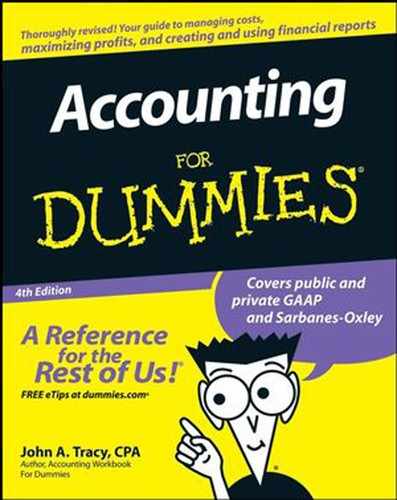9.7. Closing with a Boozy Example
Several years ago, some friends pooled their capital and opened a liquor store in a rapidly growing area. In their estimation, the business had a lot of promise. They didn't come to me for advice, but if they had I would have told them one thing to do during their planning stage — in addition to location analysis and competition analysis, of course. I would have recommended that they run some critical numbers through a basic profit model in order to estimate the annual sales revenue they would need to break even. Of course, they want to do better than break even, but the break-even sales level is a key point of reference.
Starting up any business involves making commitments to a lot of fixed expenses. Leases are signed, equipment is purchased, people are hired, and so on. All this puts a heavy fixed cost burden on a new business. The business needs to make sales and generate margin from the sales that is enough to cover its fixed expenses before it can break into the profit column. So, the first step I would have suggested is that they estimate their fixed expenses for the first year. Next, they should have estimated their profit margin on sales. Here there is a slight problem, but one that is not too difficult to deal with.
During their open house for the new store, I noticed the very large number of different beers, wines, and spirits available for sale — to say nothing of the different sizes and types of containers many products come in. Quite literally, the business sells thousands of distinct products. The store also sells many products like soft drinks, ice, corkscrews, and so on. Therefore, the business does not have an easy-to-define sales volume factor (the number of units sold) for analyzing profit. The business example I discuss in this chapter uses a sales volume factor, which is the number of units sold during the period. In the liquor store example, this won't work. So, a modification is made. Total sales revenue is used for the measure of sales volume, not the number of units (bottles) sold.
The next step, then, is to determine the average margin as a percent of sales revenue. I'd estimate that a liquor store's average gross margin (sales revenue less cost of goods sold) is about 25 percent. The other variable operating expenses of the liquor store probably run about 5 percent of sales. (I could be off on this estimate, of course.) So, the average margin would be 20 percent of sales (25 percent gross margin less 5 percent variable operating expenses). Suppose the total fixed operating expenses of the liquor store were about $100,000 per month (for rent, salaries, electricity, and so on), which is $1.2 million per year. So, the store needs $6 million in annual sales to break even:
$1,200,000 annual fixed expenses – 20% average margin = $6,000,000 annual sales revenue to break even
Selling $6 million of product a year means moving a lot of booze. The business needs to sell another $1 million to provide $200,000 of operating earnings (at the 20 percent average margin) — to pay interest expense and income tax and leave enough net income for the owners who invested capital in the business and who expect a decent return on their investment.
I'm not privy to the financial statements of the liquor store. It appears that they have been quite successful. Business seems to be booming, even without my advice. Perhaps they did exactly the sort of profit model analysis that I would have recommended.
